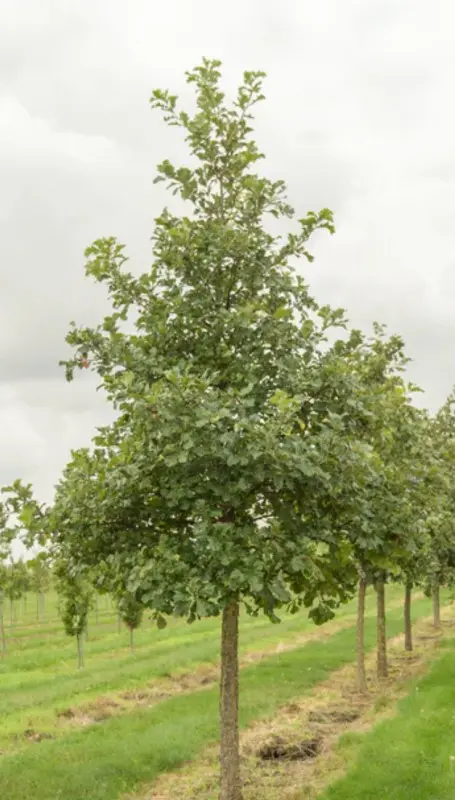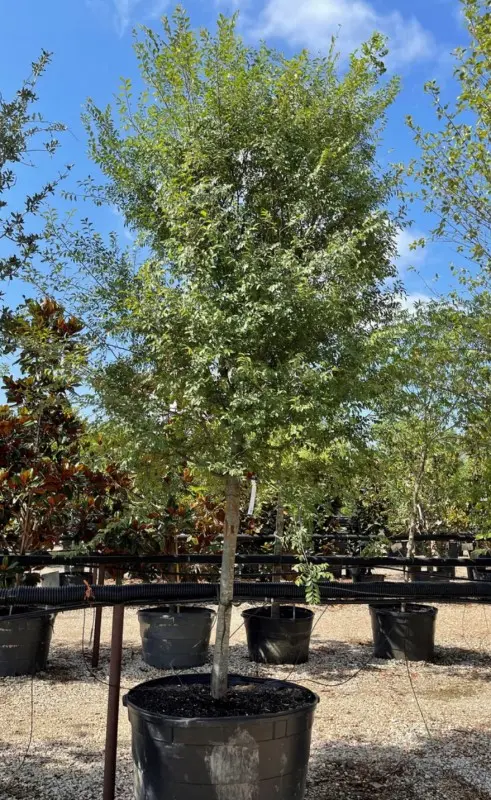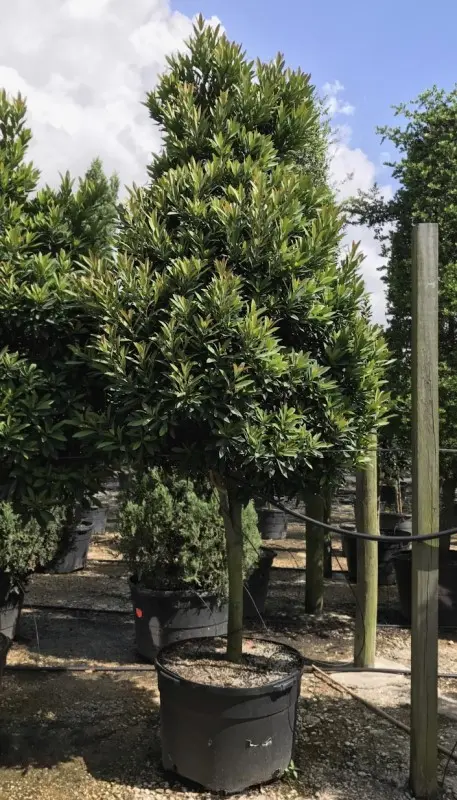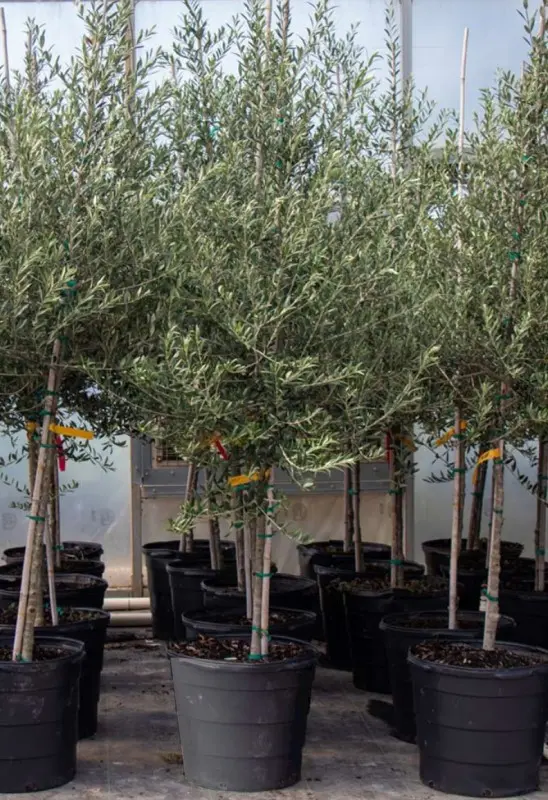-

White Oak
$0.00
Deciduous (loose leaves in winter)
Grown up to 12" per year
Up to 70'
-
White Oak (Quercus alba) is a majestic, long-lived deciduous tree known for its stately form, broad canopy, and vibrant fall color. Native to eastern North America, White Oak is celebrated for its strong wood, attractive bark, and adaptability to a range of environments. It typically has large, deeply lobed leaves that emerge a light green in spring, mature to a dark blue-green in summer, and turn stunning shades of red, bronze, and burgundy in the fall. The tree’s bark is a light, ashy gray with a slightly scaly texture, adding a distinguished look year-round.
White Oaks can reach heights of 60 to 80 feet with a similar spread, forming a rounded, dense canopy that provides ample shade. They thrive in USDA zones 3-9 and prefer full sun, performing best in well-draining, slightly acidic to neutral soils. White Oaks are moderately tolerant of drought once established and can adapt to various soil types, though they are best suited to loamy or sandy soils in natural woodland or open landscapes.
With minimal maintenance needs, White Oaks are generally pest- and disease-resistant, though young trees benefit from mulching and occasional watering during dry periods. They require little pruning beyond removing dead or damaged wood. White Oaks produce acorns that serve as a valuable food source for wildlife, including squirrels, deer, and birds, enhancing biodiversity in the landscape. With its iconic presence, seasonal beauty, and ecological value, the White Oak is a timeless choice for large properties, parks, and rural landscapes, bringing structure, shade, and natural beauty to the environment for centuries.
-

Elm Tree
$0.00
Deciduous (loose leave in winter)
Grows up to 24" per year
Up to 35'
Elm Tree (Ulmus spp.) is a large, deciduous tree admired for its graceful, vase-like shape, broad canopy, and resilience in urban and rural landscapes. Native to Europe, Asia, and North America, elms are known for their broad, serrated, dark green leaves that turn golden yellow in the fall, providing seasonal color and shade. The tree's mature bark is rugged and deeply fissured, adding texture and character to the landscape. Common varieties include the American Elm (Ulmus americana), the Chinese Elm (Ulmus parvifolia), and the English Elm (Ulmus procera).
Elms typically grow between 60 and 80 feet tall, with a spread of 40 to 70 feet, creating a broad, arching canopy that provides ample shade. They thrive in USDA zones 4-9, depending on the species, and adapt well to a variety of soil types, including clay, loamy, and sandy soils. Elms are best planted in full sun to partial shade and benefit from well-draining, moderately fertile soil, though they are moderately drought-tolerant once established. Known for their versatility, elms are often planted as shade trees in parks, along streets, and in large residential landscapes.
In recent years, elms have been bred for increased disease resistance, especially against Dutch Elm Disease, which affected many native elms in North America. Low-maintenance overall, elms require occasional pruning to remove dead or damaged branches and maintain airflow through the canopy. With their expansive, arching forms, vibrant fall colors, and adaptability, elm trees are a timeless choice for adding shade, beauty, and structure to diverse landscapes.
-

Japanese Blueberry
$0.00
Evergreen
Grow up to 24" per year
Up to 30'
-
Japanese Blueberry (Elaeocarpus decipiens) is an evergreen tree native to East Asia, valued for its glossy, dark green foliage, tidy growth habit, and ornamental berries. This elegant tree produces dense, leathery leaves that emerge with a bronze or reddish tint, maturing to a deep green. In fall and winter, the leaves may turn vibrant red before shedding, adding seasonal interest to the landscape. In late spring to early summer, Japanese Blueberry trees produce small, fragrant, white, bell-shaped flowers that eventually develop into small blue-black, olive-shaped berries that attract birds.
Typically reaching 20 to 40 feet in height and 10 to 20 feet in width, Japanese Blueberry has a naturally rounded and upright growth habit, making it suitable for a variety of uses, including as a specimen tree, privacy screen, or shade tree. It thrives in USDA zones 8-11 and performs best in full sun to partial shade. This tree prefers well-draining, slightly acidic soil and is moderately drought-tolerant once established, though it benefits from regular watering in particularly dry or hot climates.
Low-maintenance and relatively pest-resistant, Japanese Blueberry trees require minimal pruning, often just to remove dead or damaged branches. Their uniform shape and year-round foliage make them ideal for both formal and informal landscapes. With its lush greenery, attractive berries, and seasonal leaf color changes, Japanese Blueberry brings year-round visual appeal and functionality to gardens, creating a sense of structure and natural beauty in both residential and urban settings.
-

Olive Tree
$0.00
Evergreen
Slow growth rate
Up to 25'
-
Olive Tree (Olea europaea) is an evergreen tree native to the Mediterranean region, renowned for its silvery-green foliage, gnarled trunk, and edible fruit. Cultivated for thousands of years, Olive trees are highly valued for their olives and olive oil, as well as their ornamental beauty in landscapes. The tree’s narrow, elongated leaves are dark green on top and silvery-gray underneath, creating a distinctive, shimmering appearance. Olive trees bloom in late spring, producing small, fragrant, creamy-white flowers that give way to green fruits, which ripen to a purplish-black or dark green in late summer or early fall.
Typically growing 20 to 30 feet tall and wide, Olive trees have a slow to moderate growth rate and can live for centuries, with many specimens displaying their signature twisting, gnarled trunks as they age. They thrive in USDA zones 8-11, preferring full sun and well-draining soil with a slightly alkaline pH. Olive trees are drought-tolerant once established and can withstand hot, dry climates as well as coastal conditions, making them ideal for Mediterranean and arid landscapes. While they are frost-sensitive, certain cold-hardy varieties can withstand brief dips in temperature, allowing them to grow in slightly cooler regions.
Low-maintenance and relatively pest-resistant, Olive trees require minimal pruning, typically in late winter to early spring, to shape or control size. They are often used as specimen trees, in groves, or in pots, bringing a classic, Mediterranean aesthetic to gardens, courtyards, and patios. With their elegant foliage, historical significance, and adaptability, Olive trees add both functional and ornamental value, creating a timeless look in landscapes that recalls the warmth and heritage of the Mediterranean.






